9 Reasons Why You Should Make Vinaigrette
Do you know how to make vinaigrette from scratch? It’s one of the most basic, classic, and delicious things you can make at home. I’m going to share 9 reasons why you should make vinaigrette at home and how to do it.
Folks who attended my cooking classes over the years knew that I was adamant about making homemade vinaigrette. I have not bought a bottle of dressing in the grocery store in years.
I used to keep a bottle of ranch dressing in the fridge because our kids loved it for dipping veggies and fries. If it encouraged them to eat veggies, I was fine with it.
As I learned more about what is in bottled vinaigrettes and realized how much I was spending on them, I knew I needed an alternative. So I learned how to make homemade vinaigrette.
Although I learned how to make vinaigrette years before I went to culinary school, it was one of the first lessons demonstrated the first week. We used that lesson almost every week for two years.
Why are the French and chefs such fans of making homemade vinaigrette? I’ll tell you why you should make vinaigrette.
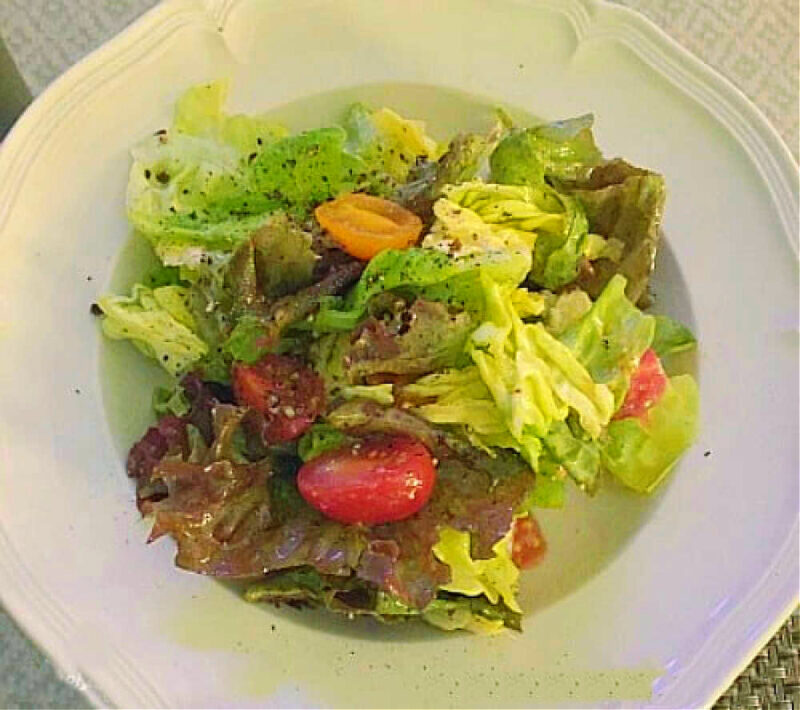
First, what is a vinaigrette? It’s one of the classical French mother sauces (yes, technically, it’s a sauce), generally used to dress salad greens and other cold vegetables. Specifically, it’s a temporary emulsion, meaning it will separate if the ingredients are not whisked or shaken.
Why You Should Make Vinaigrette at Home: 9 Good Reasons
- It tastes better.
- It’s easy.
- It’s fast.
- It doesn’t contain added sugar.
- There are no preservatives.
- You can control the amount of salt.
- It’s cheaper.
- You have more variety with fewer ingredients.
- It doesn’t take up space in your refrigerator (and get messy on the shelf).
Are those enough reasons you should make vinaigrette instead of buying bottles of grocery store dressings?
What Equipment Do You Need to Make a Vinaigrette?
Not much. Just 3 things:
- a small stainless or glass bowl
- a small whisk
- small glass bowls to hold ingredients

What Ingredients Do You Need to Make a Vinaigrette?
At the very least, four essential ingredients:
- acid ( no, not anything that would harm you)
- fat
- salt
- pepper
So let’s talk about the acid. An acid is a natural ingredient that is sour, such as vinegar, wine, and citrus juices. The acid is what gives the vinaigrette pop, zip, spark. Without acidity your vinaigrette is flat and boring. Plus, it’s not really a vinaigrette.

Next is the fat, in the form of oil, preferably really good extra virgin olive oil. Canola oil is neutral and won’t impart much taste and olive oil just doesn’t have enough taste. Oil gives the vinaigrette a nice “mouth feel” and of course flavor.
TIP: I keep my canola, olive oil, and extra virgin olive oils in plastic squeeze bottles for easy access and measuring.


Salt, preferably kosher or sea salt, is what gives vinaigrette (and any sauce) a spark. Without it, vinaigrette will taste flat.
Pepper gives vinaigrette a little spice, a little kick.
TIP: keep your salt and pepper out on the counter for easy use.
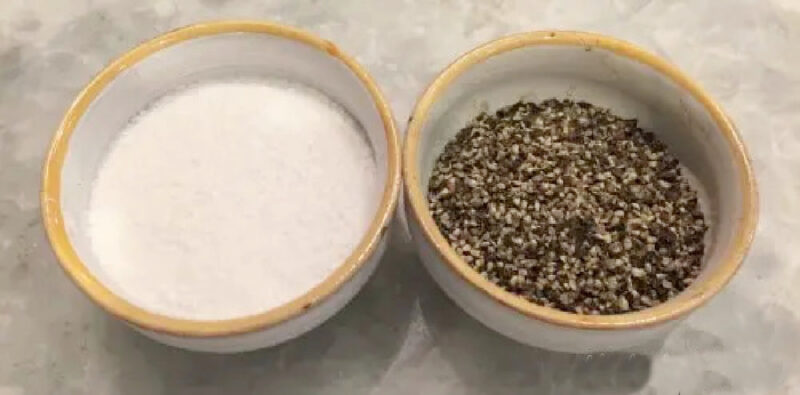
Are you convinced yet that you should make your own vinaigrette?
How to Make Vinaigrette the Classic French Way
Step 1 – in a small bowl, place 1 tablespoon of finely diced shallot

Step 2 – Add these remaining ingredients.
- add 1 tablespoon acid of your choice
- add 1 teaspoon of Dijon mustard
- pinch of kosher or sea salt
- 1 or 2 grinds of freshly ground black pepper
Step 3 – Give a quick whisk and let sit for 5 – 10 minutes.
NOTE: For this vinaigrette lesson, I used balsamic vinegar.
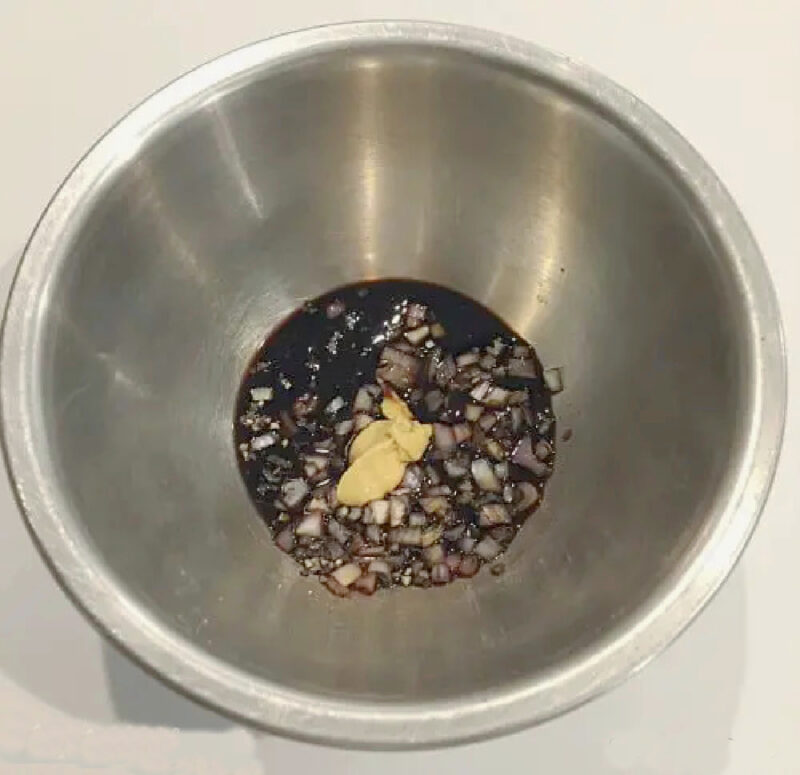
Step 4 – Drizzle into the bowl 3 tablespoons of extra virgin olive oil (or other oil of choice) and vigorously whisk to combine; taste the vinaigrette and season with more salt if necessary. It’s helpful to place a dish towel under the bowl to keep it still while you whisk.
NOTE: Vinaigrettes are made using a 1:3 ratio – 1 tablespoon acid to 3 tablespoons oil.
Other Vinaigrette Options
The best thing about homemade vinaigrette is its versatility. With basic of pantry essentials, you can make dozens of different vinaigrettes for pennies.
- substitute coarse ground mustard or honey mustard or another flavored mustard for the Dijon
- vary the acid – this is the easiest option – pick from one of the following: red wine vinegar, white wine vinegar, sherry vinegar, champagne vinegar, rice wine vinegar, apple cider vinegar, blood orange vinegar, and of course, balsamic vinegar or white balsamic vinegar. The choices in vinegar in today’s market are huge, so we should take advantage of the offerings.
- instead of vinegar, use citrus, such as lemon, lime, orange or grapefruit.
- try white or red wine or a combination of vinegar and citrus. Nothing “pops” a vinaigrette like a squeeze of lemon.
- use a different oil: sesame, grapeseed, walnut, hazelnut, avocado, champagne
- add fresh, chopped herbs: thyme, oregano, basil, dill, tarragon
- spices, such as red pepper flakes, Tabasco, Sriracha, horseradish
- minced garlic or ginger or cheese, such as hard or grated cheeses, such as Parmesan, Pecorino, Assiago or crumbled cheeses, such as feta, goat or Gorgonzola
Pretty simple, huh? Yes, it is.
BIG TIP: If your vinaigrette tastes like it’s missing something, it’s either acid or salt. Try adding a few more drops of vinegar OR a small pinch of salt to the vinaigrette. Whisk and then taste again.
Vinaigrette Extras
What are the extras that take vinaigrette to the next level?
- Dijon mustard
- shallots
- herbs
- spices
Why the extras?
Shallots, herbs and spices add flavor. What you add and how much is personal preference.

Dijon mustard also adds flavor, but it has a second purpose: mustard acts as an emulsifier, a bonding agent, holding the acid and the fat together.
Maille (pronounced my) is my favorite.

How long will vinaigrette last in the refrigerator?
Usually, I like to make just enough for the number of servings I need. If you do have extra vinaigrette, put it in an airtight jar. It should last for several days. Shake to re-emulsify the ingredients.

Classic French Vinaigrette

Equipment
- 1 chef knife for dicing shallot
- measuring spoons
Ingredients
- 1 tablespoon finely diced shallot
- 1 teaspoon Dijon mustard
- 1 tablespoon vinegar of choice or citrus juice, or wine
- pinch kosher salt
- 1-2 grinds freshly ground black pepper
- 3 tablespoons extra virgin olive oil
Instructions
- Place the finely diced shallot in a small bowl. Add 1 tablespoon of vinegar, citrus juice or wine, and the teaspoon of Dijon mustard. Add a pinch of salt and freshly ground pepper. Allow to sit for 5 – 10 minutes.
- Drizzle in and whisk in 3 tablespoons of extra virgin oil to bowl until emulsified. Taste for seasoning. Add a small pinch of salt and more pepper, if desired.
Drizzle the vinaigrette over your salad greens and gently toss with tongs.

Did this little lesson show you why you should make vinaigrette part of your culinary “toolbox”? Once you get used to making your own, you can say good-bye to the bottles in the fridge.
Think of the space you will free up, the money you will save, the lower calories, and the better tasting salads you will be serving. It’s a win-win for everyone.
ONE MORE TIP: If your vinaigrette is too thick, drizzle a few drops of warm water into it and whisk until you get the consistency you want.
If you want some salad recipes, here are a few to try.
I hope this little cooking lesson on the 9 reasons why you should make vinaigrette at home will help you in the kitchen, and save you money and space. I recommend PINNING this post so you have it handy.

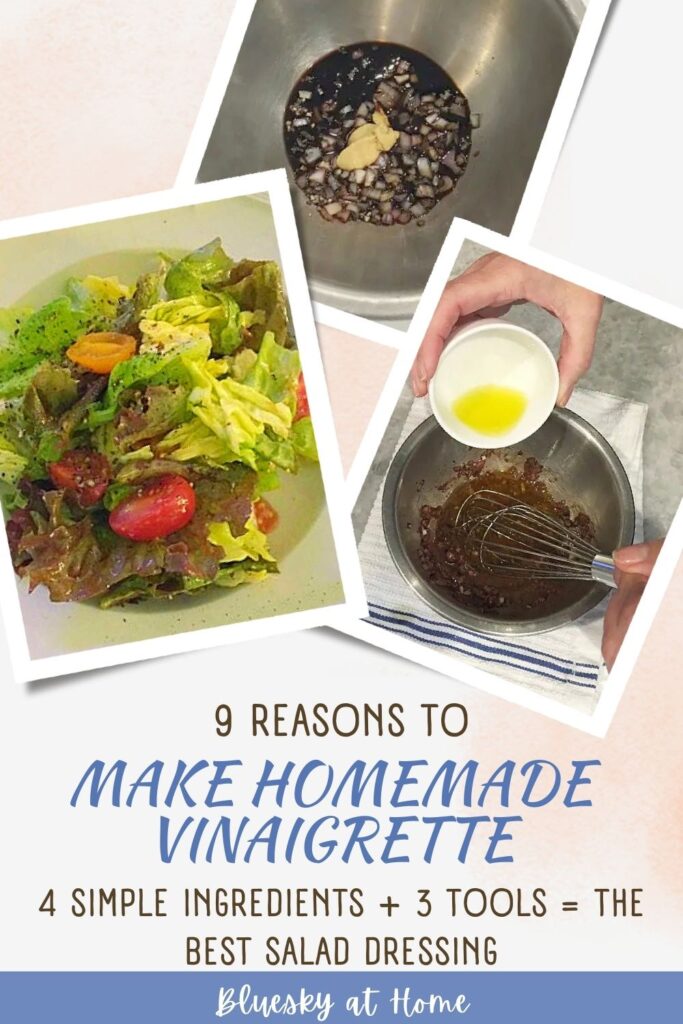


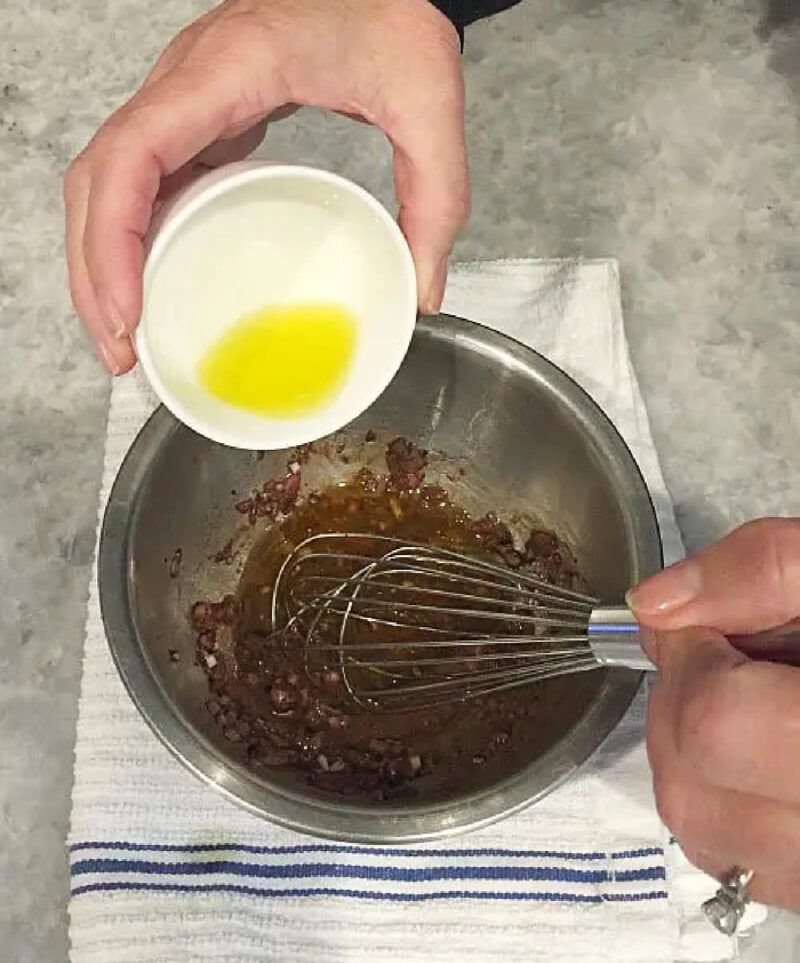

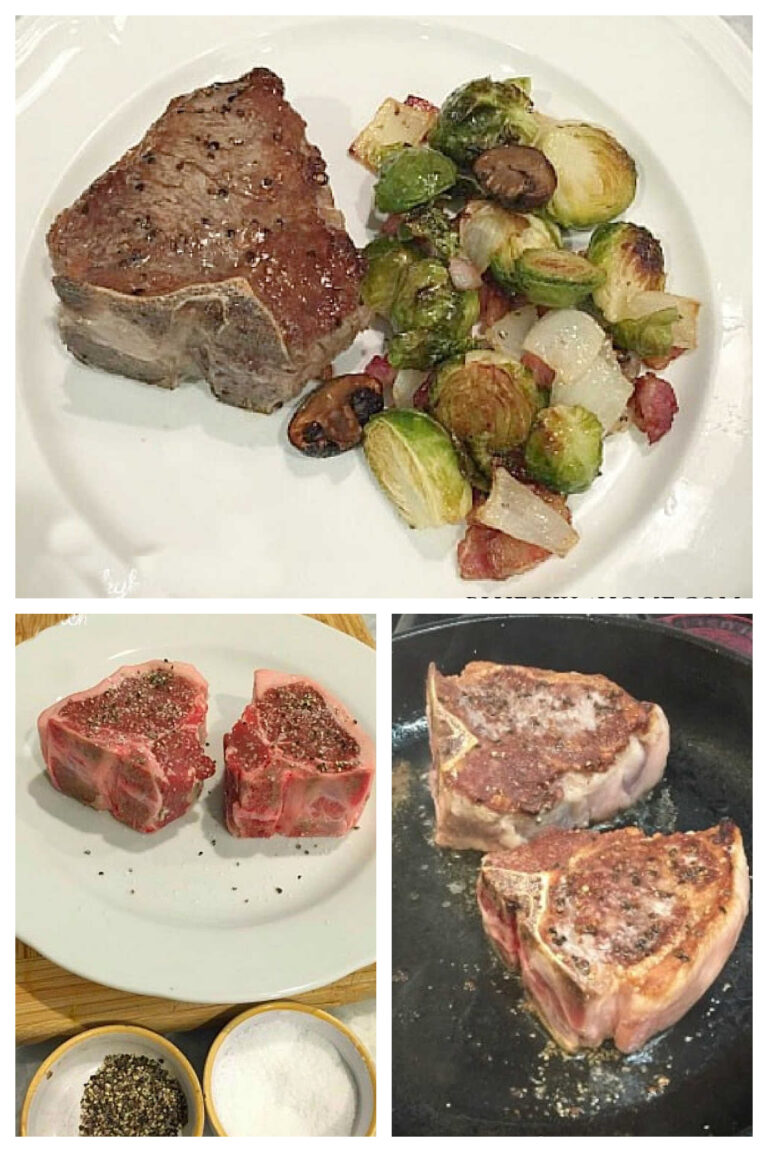








Hi Carol, Do you have a favorite Olive Oil?
Sally, that’s a great question. For cooking, I buy different brands at our Central Market (It’s a gourmet grocery store in Texas.) I look for good quality, which means don’t buy the cheapest one on the shelf. For bread dipping or drizzling over vegetables, I’ll spend more for a more gourmet brand.
I so agree with you Carol. My best dressings have been vinaigrettes. Thanks for sharing at Vintage Charm.
xo Kathleen
Glad you liked the “cooking” lesson, Kathleen.
HI Carol! Pinned!
Happy Almost Thursday! It’s warming up a bit here.
Great post, Carol! Pinned!
Most “you should be making this at home posts” normally make me want to buy the product in stores even more because it seems like so much work to make it at home. But I think I could actually do this! And I love vinaigrettes!
Thanks so much for joining us on The Alder Collective! Pinning, and we hope to see you again this week!
Kayla, after you get used to making your own vinaigrettes at home and discover how easy and versatile, not to mention less expensive and tasty, you’ll never go back. Let me know how it goes.
Carol,
Over the years I have tried to make a vinaigrette like the ones we’ve eaten in France. Mine just never taste as good as the French ones even when I used ingredients brought home from France… extra virgin olive oil, etc…
I’ll follow you directions and give it another try. Thanks for all the great tips with variations.
Judith
Judith, Make sure you have the oil to acid ratio 3:1 and season with salt until it tastes right to you. Definitely add the Dijon. I’ve been using this method for years and I don’t even have to measure my oil and vinegar any more. Practice makes delicious!